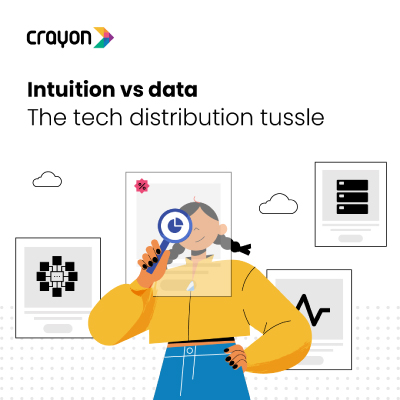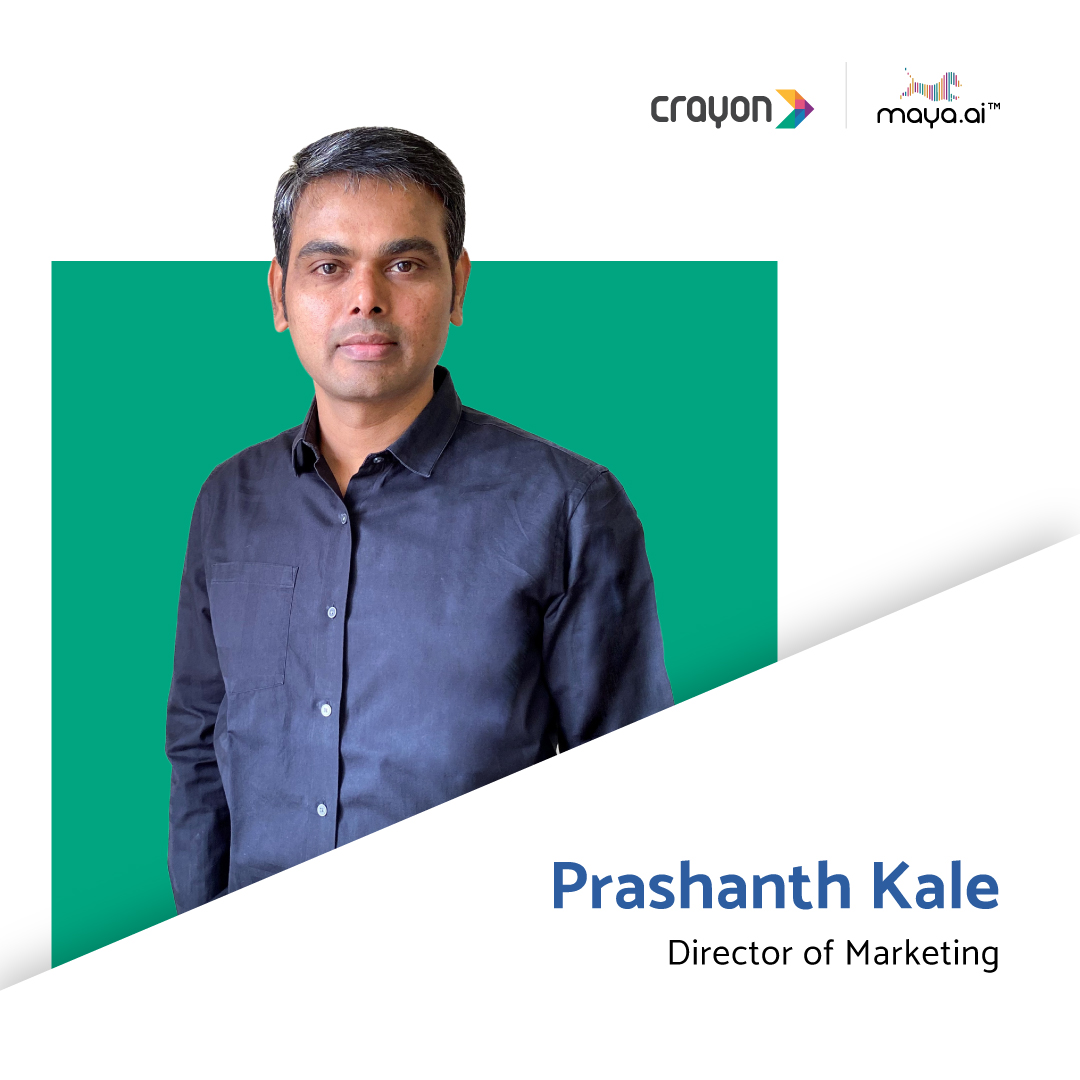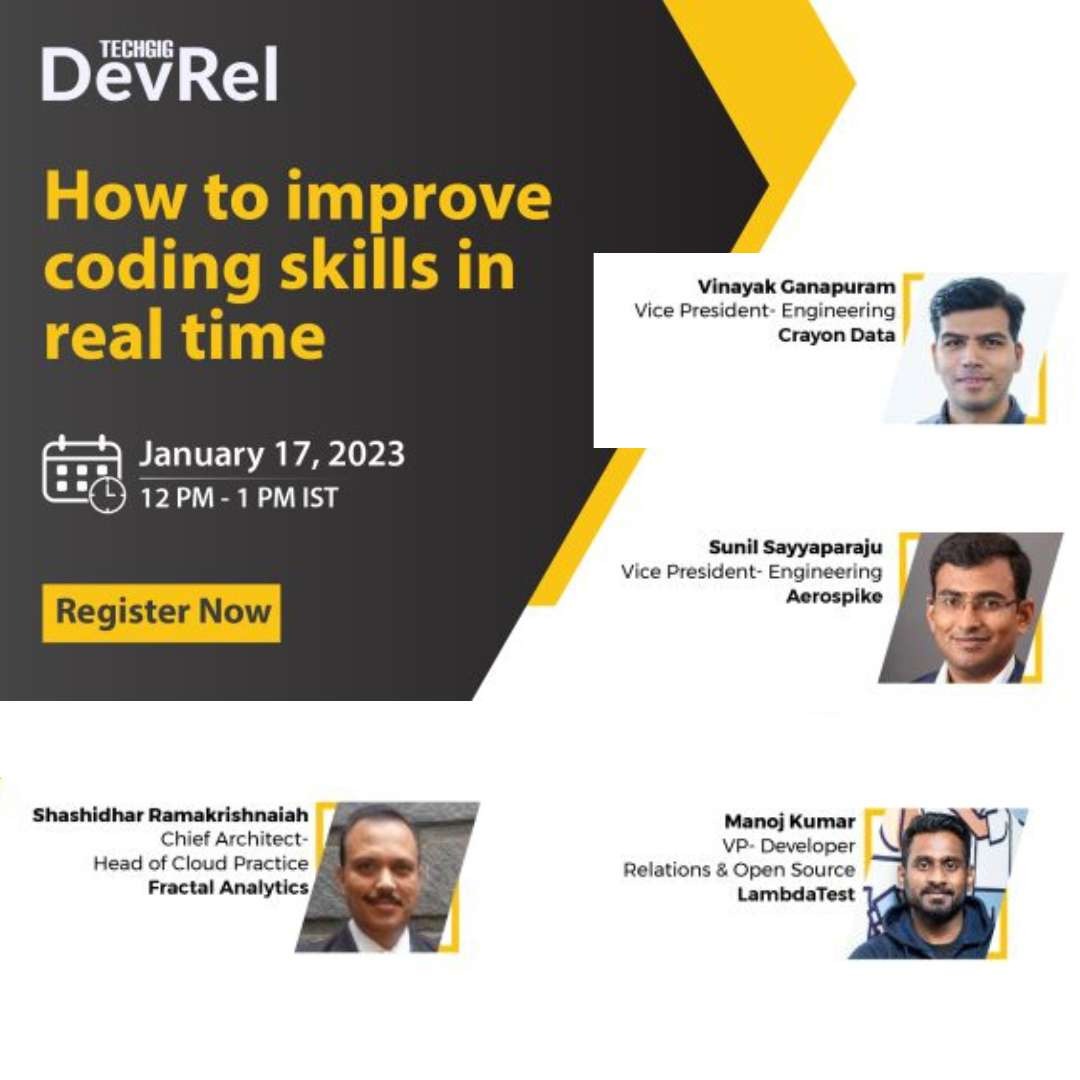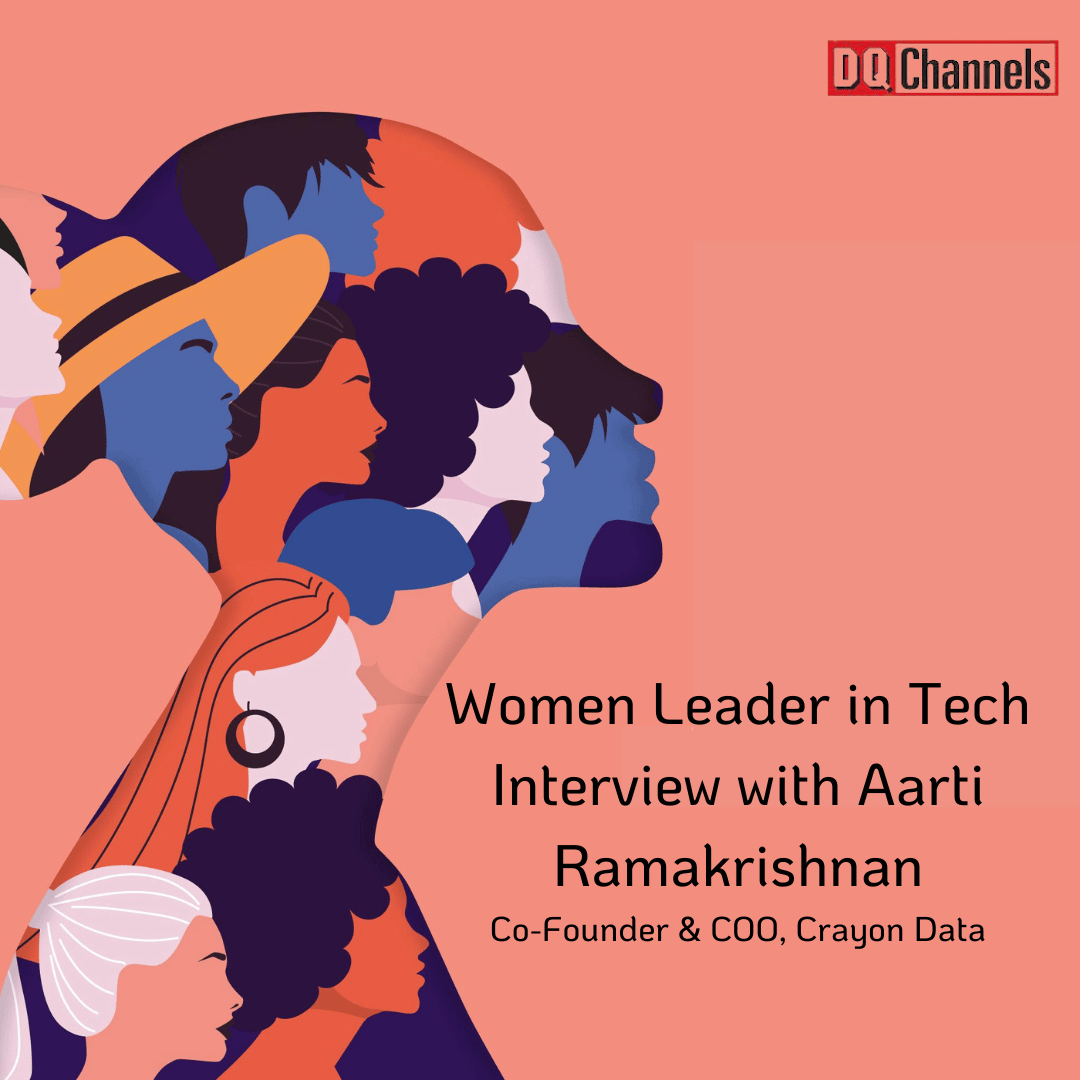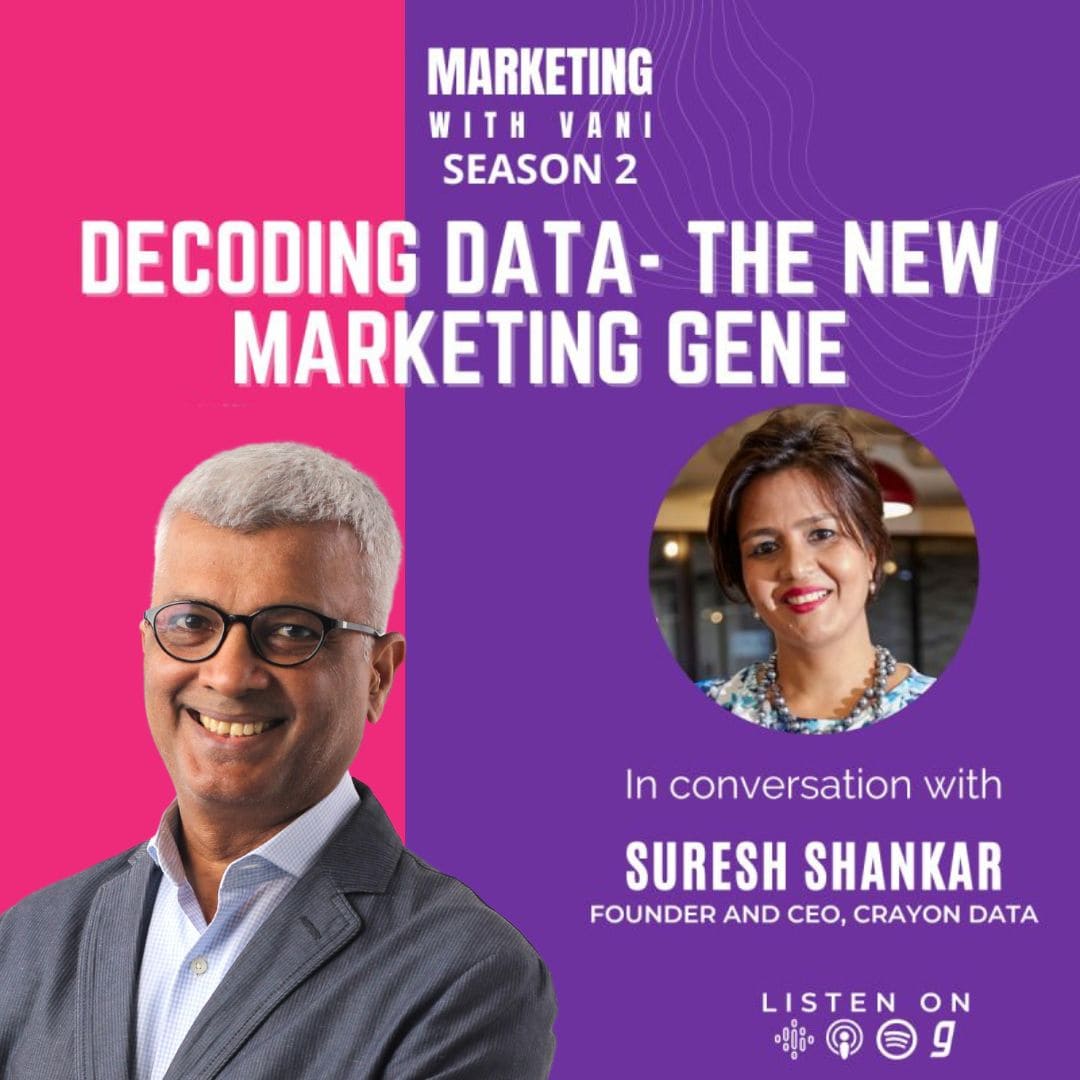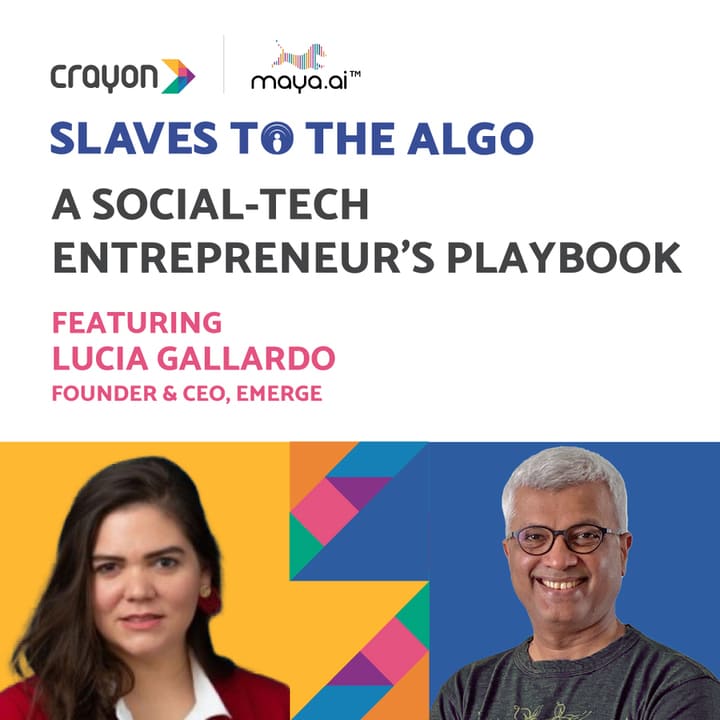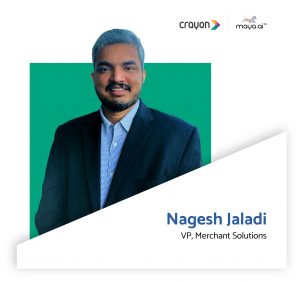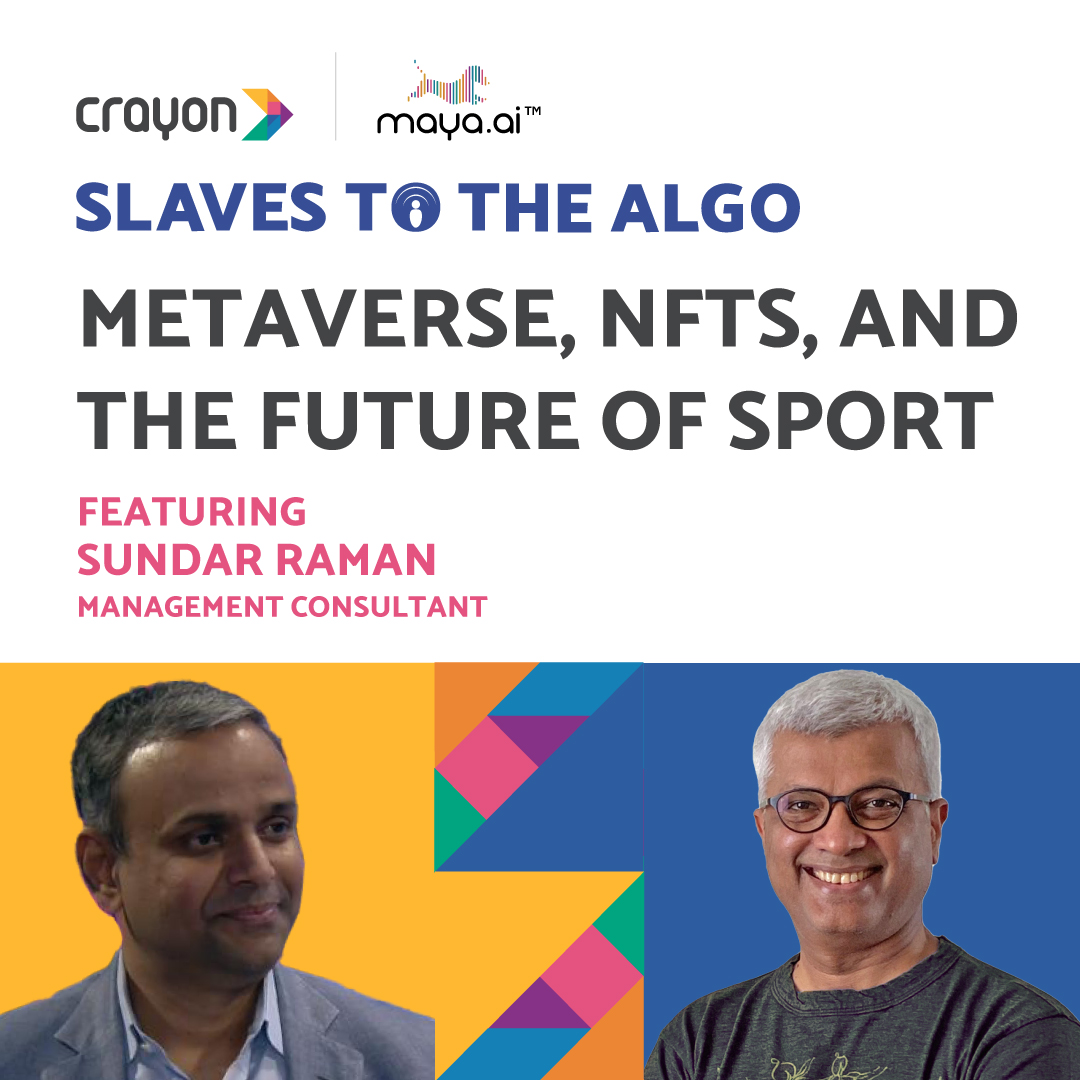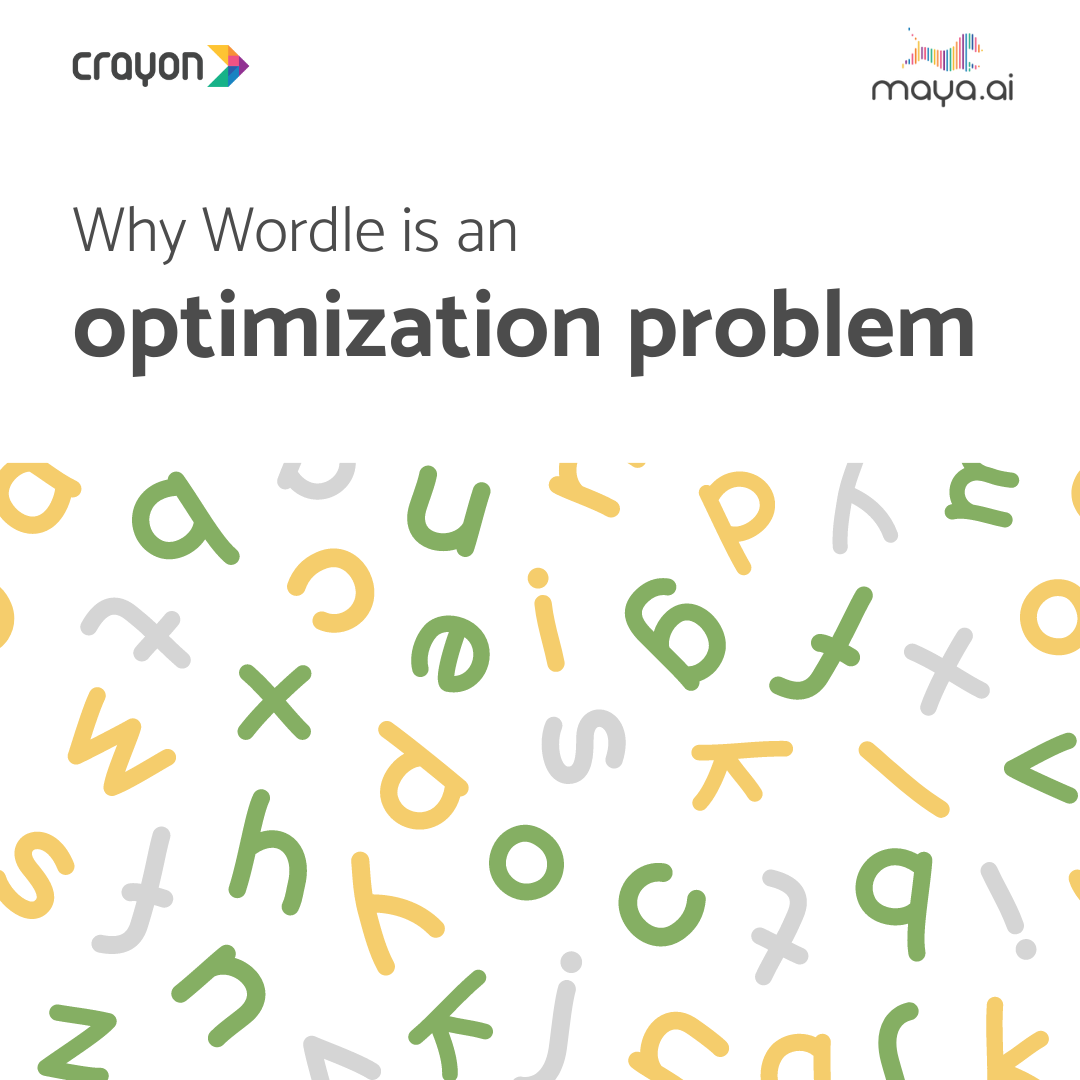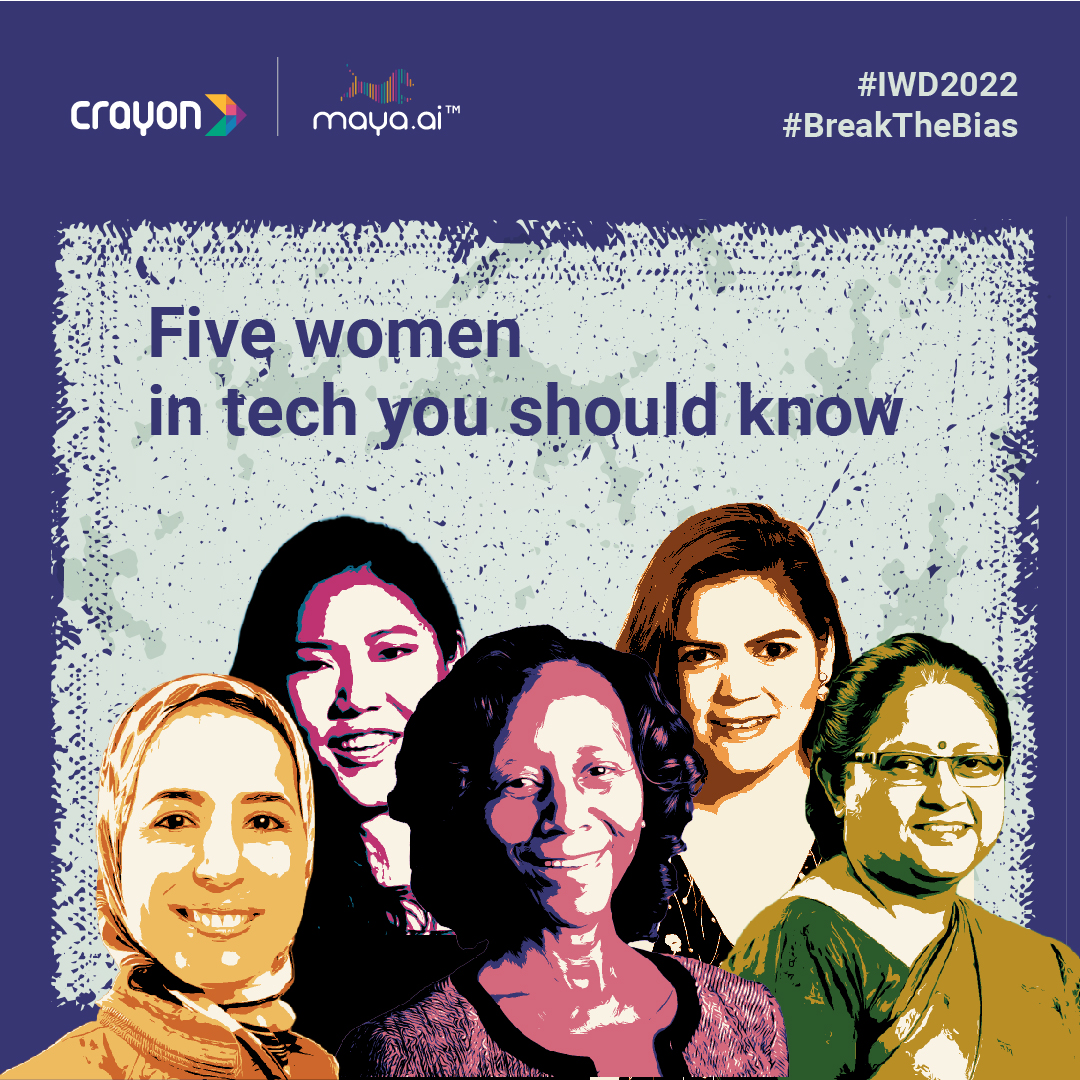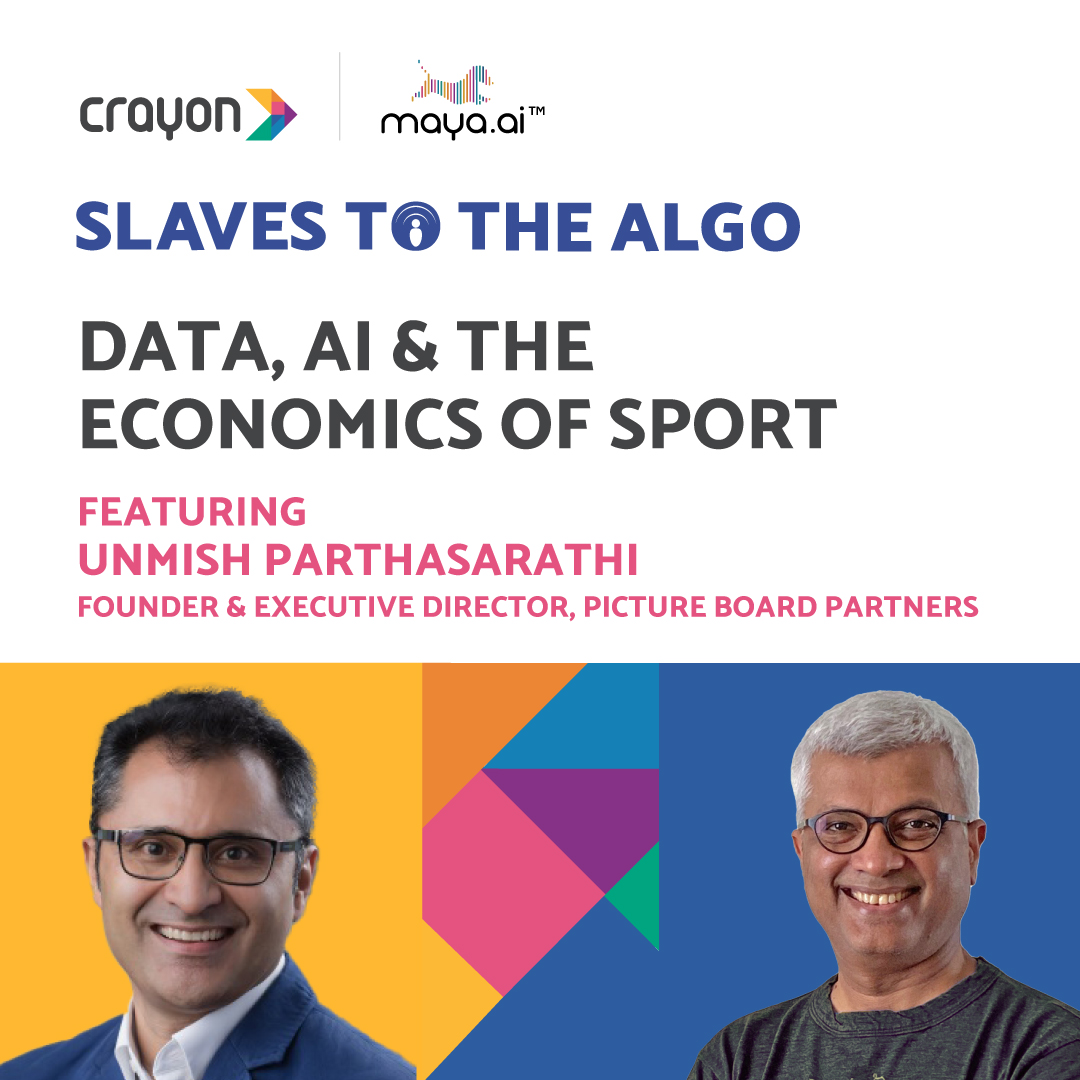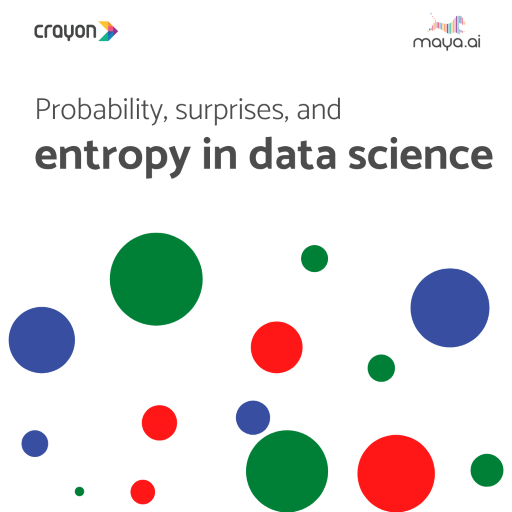Today’s sportspersons are more open to analyst insights, believes Sundar Raman.
Our most recent guest on Slaves to the Algo says, “I think if somebody is going to help me improve my game, I want to give time to listen to it, because it makes me better. And there is a definitive marked improvement.”
Sundar Raman has over two decades of experience in advertising, media and sports. He began his professional career in 1995. As a media planner, he was in the company that started the media buying revolution in India fulcrum and moved from there to working on various brands to becoming the first COO of the IPL. He is the man who made the IPL a great success. He was also instrumental in all the challenges of running the IPL like shifting it overnight from one country to another and creating new auction systems. Today, he is also the co-founder of Faze technologies which is a cricket-based collectible and gaming platform. And it’s on a mission to build a Metaverse for cricket.
Get ready to listen to the intricacies of IPL and what goes on behind the scenes! Does Dhoni also listen to an analyst? Tune in to the full conversation between Suresh and Sundar below.
About Slaves to the Algo
Whether we know it or not, like it or not, our lives have been taken over by algorithms. Join two-time entrepreneur and AI evangelist Suresh Shankar, as he talks to leading experts in various fields to understand how they are using or being used by algorithms in their personal and professional lives. Each episode highlights how businesses can leverage the power of data in their strategy to stay relevant in this new age of AI. Slaves to the Algo is brought to you by Crayon Data, a Singapore-based AI and big-data startup.
Suresh Shankar is the founder and CEO of Crayon Data, a leading AI and big data start-up based in Singapore. Crayon Data’s flagship platform, maya.ai, is the AI platform powering the age of relevance.
How to listen to our podcast
Full transcript of the episode below:
Suresh Shankar 0:41
Hello viewers and listeners! Welcome back to another episode of Slaves to the Algo. That’s right, Slaves to the Algo. My attempt to demystify the age of the algorithm, I’m Suresh Shanker, founder and CEO of Crayon Data, an AI and big data startup, a podcaster. And the host of this podcast, Slaves to the Algo is an attempt to share my own learnings in the world of data, and those of leading professionals in various fields to understand how they are using or being used by data and algorithms in their personal and professional lives. It doesn’t try to portray the future as either dystopian or utopian. It merely seeks to bring the use of data and algorithms more into our conscious thinking selves.
And nowhere is the use of data algorithms more intriguing than the world of sports. We’ve been led to believe that sports is the frontier where purity of Personal Will is determined for success. However, it is increasingly becoming obvious that data can shed light on player performance, on audience engagement, on how themes choose players, how to bid for rights and so much more. And especially in a sport, like IPL that has been managed to become a showstopper in the 12 short years since it was inaugurated. And it’s become one of the largest and the best run sports franchises in the world.
Today, I’m delighted to have Sundar Raman on the show. Sundar and I have been colleagues before but what’s very important is what Sundar brings to the field. He has over two decades of experience in advertising and media and sports and, and various other aspects of business. He began his professional career in 1995. As a media planner, he literally was in the company that started the media buying revolution in India fulcrum and moved from there to working on various brands to becoming the first COO of the IPL. And in some ways, he is the man who really made the IPL a great success. He was also instrumental in all the challenges of running the IPL -shifting it overnight from one country to another, creating new auction systems etc, etc. And Sundar has moved on from that to stints in other corporations. And today he is also the co-founder of Faze technologies. It’s a cricket-based collectible and gaming platform. And it’s on a mission to build what else but a Metaverse for cricket. And from the streets of Besant Nagar, where you grew up playing cricket to now the metaverse, Sundar is both the media man and the data man working very much in the field of cricket. Nobody better to have on to explain the intricacies of the IPL than him! Welcome to the show Sundar!
Sundar Raman 3:23
Thank you for having me, Suresh. And if you can just translate whatever you said, serves good as my introduction, which I’ve been struggling to put together. It’s the most impressive one that I’ve heard of myself, thank you.
Suresh Shankar 3:35
I’m always willing to be a brand ambassador. Sundar and since you know how to monetize these rights, I’m expensive. But you know, you’ve been in this field. I mean, you know, literally your entire career has been filled with handling data for brands for advertising, for sports, etc. But before we go into the profession, I’d like to ask you a more personal question, right? We are all affected as professionals in the technology industry, but we’re also affected as individuals by the development of data and AI. And can you share with me an example of some algos that you’ve come across that as you know, you said, Oh my God, you know, or oh, my God, I’m fearful. But in the field of sport, which is the field that you do, and even something that was like, wow, I didn’t know data could do this.
Sundar Raman 4:21
I think instead of being it on in the field of sport, something more personal was the advent of social media and how you felt like you were in The Truman Show. Anything that you said everything that you said, you know, suddenly you say, you know, holiday in Turkey sounds nice. And you start seeing Turkish airways ads on your, you know, on your feed? I wouldn’t say it was scary. It was it was a bit of a glut if I may say so in terms of the intrusion that happened. And that actually, you know, pushed me into another zone of, you know, what does decentralization look like? How does, how do things look, if there is no central authority, and if you look at it from a digital evolution standpoint, a web one and web two, web two could have been what web three is serving today, which which allowed web three development to happen. I think that sort of changed some perspectives helped me change some perspective, as we look at the world slightly differently. And, you know, the, it’s more, it’s more a book that I read, which actually put me on that path, which was the age of surveillance capitalism, which actually, you know, said a few things, which most people are shy of saying, and what algo could do, and what the slaves of algo is doing, is actually can actually be a demon. Or, or, or a blessing depends on how you use it. And therefore, it tells you that fine line when you cross it when you don’t. So that’s been my personal experience, which helped me change perspective, change careers , change, you know, at least get myself immersed in newer technologies and newer spaces, which hopefully won’t go that way.
Suresh Shankar 6:12
Hopefully not. And, you know, I think most of us who worked in data and AI, are also hopeful that web 3.0 will actually be decentralized and not end up being where data doesn’t end up being the property of a few large platforms. But going back into that, I do want to tell you a little bit I mean, you use a lot of data for sport. And I do want to think, is there anything that you came across when you said when you moved from being just this whole media planning into getting into sports, right? Was that something what that whole transition that happened before we get into anything that you do with the IPL, that itself must have been a very, very big transition for you? What does it led by? Is it the excitement of sports, the use of data and you know, what, what was it that led you to make that change?
Sundar Raman 6:55
I think if I bring it closer to sports, practicality is, most people rely on instinct and down. You know, an innocuous comment by one of the cricketers in the matter of fact conversation made me look at some strange streams of data to actually validate or hypothesize what, what is and what is not. One of the things that I came across, when the speaker I mentioned was you know, it’s difficult to bowl to left handers at depth and didn’t strike me. I said it, maybe because you all think that is flogging and that is you know, going hammer and tongs at somebody. Then, I went as, as back as you know, Michael Bevan days to Lance Klusner, and you know, all the left handers and actually realized the economy ratio of some of the best bowlers against left handers at depth is higher than against right handers. It is true, it is true. And that allows you to validate a few of the other things. And that’s not that’s not serendipitous, in terms of data validation and serendipitous by way of a comment of an educated, informed experienced cricketer who just maintained without any support of data or more instinctively more intelligence based rather than data supported. When you go back and validate it that makes you replan, rethink, strategize and say hey, how can this be used? Sometimes we wait for data to say the things that we want to hear or suddenly, you know, throw us something which is very interesting and exciting, but the fact is, if you don’t ask the right questions, it does not want to help. In this case, it was a comment that actually made me look at data very differently and you know, sort of made things look very, very different from that point on and say hey, is this is this something that is worth investigating, exploring and hypothesizing and that’s that I thought was very interesting fact. And then you look at it, you go back and say, you know, Alan Border is a finisher, Michael Bevan is a finisher, Lance is a finisher, Albie Markel is a finisher. David Miller is a finisher, you know, you suddenly see that as a stream of data. It may not be true in 100% of the cases, but I think it is true more often than not.
Suresh Shankar 9:17
And that’s , you know, just tell me a little bit deeper into that I had read this interesting article recently saying that, you know, to the level that data is available that the best ever bowler in the history of the world ever against left handers is Ravi Ashwin. Apparently, his strike rate and economy rate is everything rate against left handers is like, wherever you go whatever thing you can take all the variables out of there, it’s the best. And that was very interesting to me, because, you know, I actually went into the data of the article and there was a lot of stuff that showed how under practically any circumstance, he was like that and, and the question is, he obviously didn’t become great because of the data. But when you have data like that, how does the sportsman start to use it? then you’ve actually walked and talked with many of these sportsmen. So can you give us a few examples of how people, you know, you go and give them this data? How do they use it? And how do they process it as a sportsman?
Sundar Raman 10:10
On a lighter note, I think people think Ravi Ashwin is an off spinner. He isn’t, I think he is he also goes off-spin, I think that’s, that’s, that’s sort of the part of the mystery, right. And that’s what makes him a great bowler and, and a candidate for all things that you want it to be solved in a difficult situation. And, you know, that’s true of many of these, many of these guys, you take you take the examples of left hand spinners or pie-chuckers to, you know, service. So that’s my ride. So I think there are people who have busted myths. And there are people who have fallen for the same myth, I think it is. Nobody goes into a game as far as I know, thinking about hey, I’m good against left handers, I’m good against right handers, they play the situation, and they get the best of their craft and skill out. More often than not, it is his sort of muscle memory in a manner of speaking, you understand the player. Ravi Ashwin is a kind of guy who probably watches every ball that that the opening batsman has played before he goes in for the game. And I think there’s a very interesting piece about how he bowled to Steve Smith in the Australia series and how he got him out in the first few tests. I think reparation defines everything. Some people don’t want to confuse themselves with data, they just go very clean in their head and say, I don’t want too many distractions. This is what I want. There are some people who go with a lot of data understanding analytics and say, you know, this is a situation that I need to create, to be able to exploit the situation. So I, I dry up the run,
Suresh Shankar 11:39
or just to go into that. So today, if you take the world of cricket today do or does a player go to the analyst and say, Hey, I know I’m going to go up against this batsman? Can you give me some data? Is there a more collaborative approach? Or is it primarily driven by the analysts going and saying, Hey, you should be doing this? How does it work today? The dynamics between let’s say, the analysts in a team, somebody like P-Dogg or somebody and the actual players? Where does that?
Sundar Raman 12:04
I think it is it is more symbiotic. More players are wanting more understanding of their own game, they started because they want to understand their game better. They That’s how it starts, and then they start to understand the game better. And I think that’s a marked shift that has happened. And analysts are an integral part. Matchups are a big thing these days, right. And some people think it’s overrated, some people think it is important, you know, there’s streams and streams of data around matchups against, you know, bowling to, to a batsman and early part of his innings to latter part of the innings. You know, getting people to buy into that belief system is what the analysts do. I think they, they they have to prove themselves in terms of you know, here are the situation this is what has happened is what is proven to have happened, which may convert some of the, you know, non believers into believers. But it all starts off with, Hey, let me help you understand your game better. And data is a way to help to understand your game better, and that enriches the game overall. And there is the lack of
Suresh Shankar 13:04
the same kind of, I mean Sundar, again, you worked in media, where we worked with clients, I do that all the time of data and AI. And part of the time you know, you mentioned something very interesting when the analyst has to go and convince the player that I have an insight that can help you. That’s what we do with clients, right. But you know that when you go to the clients, that’s a very hard problem because they all come with their own biases, their own prejudged you know, views of what what the business should be. Are sportsman like that? Are they more open?
Sundar Raman 13:33
they’re far more open, I think if somebody is going to help me improve my game, I want to give that 10 minutes or half an hour or one hour of time to listen to it, because it makes me better. And there is a definitive marked improvement, you know, in in the case of a client, there may be a cost of risk, which is slightly different in terms of the the player, at least as far as I know. And unless giving information to help a player understand his game, or the game better, has never broken anybody’s career. So to me, it’s worth listening for sure. It’s definitely worth listening for sure.
Suresh Shankar 14:08
And is this largely restricted in the T 20 format? Or do you think that now it’s becoming more and more common across formats? Are people preparing more like this even lets say in Test matches, which have traditionally being seen as a more kind of a long form, skill, persistence, kind of a play, as opposed to, you know, the matchups that are very frequently characterized the T 20 Game.
Sundar Raman 14:30
I think the matchups is a match up irrespective what format I think It’s you versus the player. So the the, from the analyst lens, that I at least I’ve had the opportunity to work with a few of them very closely. Test cricket is the cost of not understanding your game is far more higher than than in T20. Right at least you get to play more T20s in the real sense. So in fact it is it is even more relevant to understand because you have to set up the situation to exploit a situation whether you are a batter or a bowler, right? I think that is very, very aggressively looked at. So it’s not it’s it’s generally a belief saying it’s only relevant at T20 or misconception that it is relevant in T20. I think it’s relevant. If you’re playing the game, it’s a question of what you choose how do you choose the the mood with which a batter or a bowler goes into the game may be very different. Because in a test match, you’re you’re far more, you know, accepting or leaving the feeling the ball as against, you know, playing the ball as the 20. But that doesn’t change the fact that you understand your game better. And I think that’s what world over, people are focusing on. help me understand
Suresh Shankar 15:40
Here’s a hypothesis Sundar and I want you to validate it with your vast knowledge of both the game and the data, you watch a lot more cricket than I do. My belief is that over the last five or six years the use of data has been one of the fundamental reasons why bowlers are much more consistent in the lens and lines of their bowl today, overall, even in Test cricket, as compared to maybe a decade ago when it was still seen as a skill you know, it was seen as a bowler skill. But nowadays I actually see every bowler coming out with this clear plan, length, line almost across all teams in this thing. Would you agree with that hypothesis?
Sundar Raman 16:19
I think data is one part of it, but not the fundamental necessarily the fundamental part of it in my view, I probably put it to the size of bats. When you give a batsman the size of bat that and and he’s talking the bowler you have to change your game, you don’t have a choice. I think increasingly cricket is becoming more and more a batters game is making bowlers much more smarter. I think that’s important factor in terms of you know, change the environment, change the conditions you change yourself. And I think that’s very, very interesting and important from a bonus perspective. Because at the end of the day, each of them are competitors, and they want to compete. You didn’t give the advantage to the bowler it’s the same old ball as it was 100 years ago, right? You can change the color of it. That’s the best that you did. And you know, that’s not the that’s not the way that that cricket is moved in terms of the number of players in the field, the field restrictions, the size of bag, the size of boundaries, uncovered wickets, covered wickets, because a lot of things has changed, I think. And you even curtail the number of boxes. So what do you do?
Suresh Shankar 17:20
So that now brings me to a last question and it’s the thing. In your experience, do bowlers listen to analysts more? Or do batsmen listen to analysts more? I
Sundar Raman 17:30
think it’s left to individuals, I think. I think it’s got nothing to do with bowlers or batters. I think anybody who wants to improve their game, look at data to understand it, but not necessarily be slaves to it.
Suresh Shankar 17:43
And I would be remiss if I didn’t ask you this one question in all your years of like, you know, at the IPL, you’ve been, you know, advising the Mumbai Indians, you followed a lot of sport, can you give us a couple of really great examples of how somebody used it on the field of play a piece of data, to do something that was like, you know, that that helped the team win or, you know, help in a matchup? Couple of really nice examples, which would round it off before we go to the next part of this.
Sundar Raman 18:10
No, I wouldn’t put it to data, but what I found interesting was probably instinctively if you go back to the 2010 IPL final, which was CSK vs Mumbai Indians and Kieron Pollard came into bat. MS Dhoni plays the fielder right behind the bowler. And it was it was pretty unique at that time. And most people have started to do it and and, you know, he hit one straight to Matthew Hayden, if I remember the player there, and Matthew Hayden has his palms are the size of yours and mine put together and, you know, it’s it’s it actually changed the course of that game, whether it was supported by data or not, I wouldn’t know. But the fact is it it wouldn’t have been, without some understanding of the game, or the understanding of the batter’s ability to play a game. And I think that’s, that changes a few things in in cricket, I think people have started to follow that. And, you know, implement some part of that, as the new batters come in. Understanding the left handers or off-spinners you know, situation or, or you know, the white Yorker situations that people bowl or the slow bouncers, I think those are all changing tacts. And again, but not necessarily supported by data, which is data intelligence, over information, I think you use the intelligence with information, you become a better cricketer.
Suresh Shankar 19:29
It’s interesting, because you know, for as long as I can remember even playing cricket that you almost had this instinctive feeling about what to do in particular people whom you played against repeatedly. And I guess, data is nothing more than the capturing of that intuition in the form of a coded system, and then translating that back and feeding that back and saying, Hey, listen, this is happening. And in some cases, it supports you. In some cases, it may remove a bias. I think this is a question that interests a lot of people who are listening out here. Dhoni, does he use data or is he just a guy who’s got this Only intuition, you should ask him that you should, you know, you should be telling us the answer.
Sundar Raman 20:06
I can’t speak for somebody else’s belief systems.
Suresh Shankar 20:09
That’s a cop out on that, but we’ll go on to that. Sundar so what’s what’s interesting is we go off the field of play. And I think you look at the use of data and sports and algorithms in sports, what’s very clear is that the IPL basically started off, you know, it was a good idea just started off somebody now, and you are at the beginning. So perhaps you can walk us through some of the beliefs that that led, you know, the team to believe that this would be a great thing, and especially this idea of the auction system for players and you know, and how it goes. So, right from the beginning to where it has evolved, I think there’s nobody better to tell us how, how this is gone.
Sundar Raman 20:45
I think the when it started, the euphoria was backed by a sound media deal. And, you know, that gave assurance on sustainability of the business and longevity. So you could, you could move the other markers, if you have too many moving parts, you’re never going to be able to build a business. So if that that part of it and I don’t know why they call it stable, then you could move around a whole lot of the other pieces and the franchisees came on board and the quality of my caliber of franchisees was one part of it that I added to the to the to the entire game, and obviously the experimentation of city-based franchises. While it may have been pretty common at that point in time, or, you know, very common sensical as we look at it, you know, 14 years later, the fact is, at that time there was there was a deep, what should I say apprehension anxiety about? Is this going to work? Will it work? I think our moment of truth as we defined to ourselves was, you know, you know, Brett Lee bowling to Sachin Tendulkar in Mohali. Full house, Sachin edges, you know, caught behind, the crowd going to cheer or boo, what is going to happen. And that, that was that was a moment of truth. And once it started to get going, we were reasonably convinced after the first few games and I think at that time, there was still a belief system that oh, 59 matches is not going to work. It’s okay. And now we’re at a few matches fine. I think it’s sustained the momentum. And before you got to all of that, how do you roster and players, I think the entire rostering in players was was critical part of it. And you know, sometimes when you don’t have too much time to think and analyze and you know, do all sorts of permutations combination, you get down to doing things. And that’s what happened in the case of IPL. It was I think the tea time conversation with some people and stuff was fine, we do it like, like, like the Christie’s or, you know, the art auction, you know, that that made sense and said, Okay, it’s worth going with it. And that allowed rostering of players it allowed fairness in terms of discovery of price, it allowed players to be bought within a salary cap. So all the money in the world couldn’t buy all the players that you wanted, I think that was important from a construct standpoint. So to me, the auction is is one of the methods, I think what goes behind the scenes in terms of player regulation, the dynamic nature of availability of players, injury replacements, and the entire, you know, set of regulations running into you know, 4050 100 points. That is what is the is a number of what the IPL is, there is like a, like a black box of the IPL. That’s probably.
Suresh Shankar 23:35
And when you look at the auction, which recently concluded here, and there was a very, there’s been a lot of interesting thing about how people have gone about putting together the teams and all of that stuff, right? And without going into the game theory part of the auctioneering because obviously everybody’s trying to do some of that stuff. What really does a franchise what really, how does a franchise sit around and say, this is what I’d like to pay for a particular player and why I think this particular player is worth more, what’s the way all of these strategies are formulated and what kind of data goes into them? Apart from the obvious data of performance, but you know, it says I want this player because I know he’s very good. The whole idea is that you know, how does this pricing equation work? Is it pure demand supply and bidding or is it actually because sometimes we find people are paying a lot of money for a player which nobody else seems to really value that much and other times you find the players that people should be picked up and then they don’t
Sundar Raman 24:30
I think if I can summarize it in into three bullet points or headline stuff, one of it is clearly demand supply, I think and that’s not at an individual player level. That is that at a set of you know, there is a supply overseas batters stock order there is a supplier of overseas bowlers the supply of Indian bowlers. Now that kind of group is how many for example, if you take an opener each team will require at least two openers if not three, as backup. So, across 10 teams there are 30 opening slots and with retention, you probably already have eight or 10 retained, in which case, the other 18 or 20, is what is going to happen. And within that, if you broadly categorized as a tiered system, I think these are players will walk into a level when these players will, you know, you will want to nurture and keep as backups, I think that’s the way you say, okay, therefore, what kind of of openers Do you want. And if you have a preference for left, right combination, that’s how that’s how the demand supply works at a at a skill, or specialist
Suresh Shankar 25:34
level, let’s say in each of these categories, in some category, if you feel that the demand is going to be far greater than the supply, you basically allocate a large chunk of money for that particular type of player,
Sundar Raman 25:45
you don’t necessarily allocate a larger supply of money, you will need to pick and choose and say, if I have to go in for this, what else gives? I think at the end of the day, if I were to summarize it to three bullet points, one is one is demand supply, right? The second is value of a player over time. Clearly, that is that’s important, a young player vis-a-vis, you know, player who’s got experience, and over a period of time, you know, I see value in this player being a part of my ecosystem for for time to come, I see a cyclicity Oh, so this year, was was a big option, right? So you know, you’re gonna have the player for a three to four year period, right as against if you had last year’s option, it was a one year value for the player and therefore, you want to burn your purse, you don’t mind paying top dollars for a player, because it’s a one year risk. Right. That’s, that’s, that’s one second part of it. Third, part of it is recency. I think performance recency weighs in reasonably well, in terms of player’s performance, you do look at current form, you look at conditions you do look at you know what this works, this is not work. This guy is in the news, whether it’s, you know, a batter or a bowler and all that. I think that’s, that’s, that’s a factor that weighs in the fourth, I think is, is a bit of a softer aspect, generally answered as culture, you know, does this kind of a player fit into my cultural ecosystem, you know, that kind of stuff, which sort of overlays into
Suresh Shankar 27:11
culture. And when you say culture, you don’t mean it’s all Indian themes in a way, but you mean culture in a, in a playing style, you know, if you want to play
Sundar Raman 27:20
could be, it could be a coaching definition and say, you know, I want this type of cricket, I want this brand of cricket to be played. And I think that’s, that defines my DNA, or that defines my how I’m looking at it. It’s also the organizational culture, right? It could it could look at saying, you know, I have familiarity with this set of players. So I, they played with me, I’d like to have them back or, you know, I like the Why do you choose coaches very differently? Right. It also fits in not because he’s the best coach alone. He’s also fits in with your with your ecosystem. And I think those are relevant and important factors of auctioning. And the last one, of course, is availability. I think are they going to be available continuity of fate, whether any other tours, which of which are going to come in the way? Am I going to get the entire season with him? So that my dependency goes up? Those are some of the stuff that we’ll look at it, I think that’s how generally the auction pricing strategies are worth when you go into the auction, the preparation is immense, right? You people choose to do mock auction where you know, each members of the of the support group take up a specific role, which allows you to do price discovery in a simulated environment. So you take the role and you give a belief system, okay, they are going to look for an opener, they want to look for a foreign passport, or they’ve had success with left right opening combination, or left right bowling combination, they have a successful fast bowler or their wicket is a turning crack. So it may be slow, you may need one more spinner than other so people
Suresh Shankar 28:48
do these simulations over a few days, because they actually are trying to get the whole thing all teams together.
Sundar Raman 28:54
I think they do it over a few days over a few rounds in terms of you know, round one, round two, round three, round four, round five. So you arrive at certain skills and understanding over a period of [time]. it’s like play acting, right? If you were to be playing that role, how would you choose your team and that’s with a purse with a salary cap and stuff and you know, somebody else is competing for it. So that gives you some insights into price bands rather than price itself. The last part of it which is the most important part of it in my view is people don’t necessarily pick players by name. There are a few players who you pick by name or you want by name right rest of it you pick specific roles that you want to fill. I want a top order batsman who strikes at 130 plus strike rate or I want a finisher and these are the four options that’s available for me. I want an express quick bowler I want a mystery spinner. I want a you know mid lower bowler I want an off spinner and these are the options to me. So that allows you to say, I’m not falling in love with a name, I am fulfilling a role. And therefore these are the players who will give me that role. And then you categorize and say this is ready to walk into the eleven. And this will take a little bit of time. This is investments into the next five, seven years and therefore, what combinations that’s how you allowed 23-24 players. And each one has a kind of a backup and some people get opportunities.
Suresh Shankar 30:26
And I wondered whether you watch the YouTube show that Ravi Ashwin put out with P-Dogg and Nanee after the thing practically or the day of the action, I don’t know whether you saw that was a very interesting for the first time I saw player really doing a real time analysis end of the day, and literally going into each thing and why they when he was talking to other people, including an analyst as to why the teams are constructed what money was being paid for a player, how a team strategy was evolving. I don’t know whether you saw that show. And
Sundar Raman 30:55
I caught glimpses of it honestly, it is made auction midstream. And I think you know, there’s a there’s a there’s some quality content that is put out there, I put this amongst that in terms of the quality of narrative and understanding of players
Suresh Shankar 31:09
is really the understanding of the game, not just I think. For me, what was very interesting for the conversation Sundar and be interesting at your views is there was an understanding of the game. And there was an understanding of what the economics of an auction would be and how we were putting it together, though it wasn’t like necessarily looking at the pool. And that I thought was very fascinating. And to find a modern day cricketer doing that, in the middle of his career, one of the best players in the world was I thought fascinating.
Sundar Raman 31:34
I think it is it is an interesting sort of segue into to another side of of scientists, Ashwin if I may call him that I think the important thing to note is nobody goes back from an auction unhappy because they paid lots of money or some money to buy a player out of their own free wallets. Right, me I paid X dollars to buy a player. So there’s no post purchase decisions on who I bought him, I didn’t have a choice. I don’t know, anybody says that. If I’m also I’m a firm believer that you don’t win a championship in the auction room, you’re going to championship on the field of play. And I think there may be overstressed and over importance and a bit of exaggerated reality around the options that that may carry away a lot more fertile minds with greater imagination to talk & analyze and you know, do combinations. The fact is you’re buying players based on that day, you know, play could get injured, you may you may go in for a replacement, you may find substitutions, look at this example of Chris Gayle, who would have thought in that year he flew in from, from the Caribbean and went on to win the most valuable player in that series. And and you know, he will not even pick those will drop. The fact is there is there are different motivations, and there are conditions, situations, environments, availability, having a lot of things in winning a championship and consistency of performance over a sustained period of time, is there to try to stand by good quality players. I think it’s important factor in
Suresh Shankar 33:01
auction. And that is such a great this thing, right? I mean, it’s not one in fact, somehow to me, sometimes I feel that the auction itself has become like a media property that generates excitement among the fans and stuff like that. But finally, we’ve seen some right from the first IPL in Rajasthan Royals wanted to nobody would have given them a chance to the number of times that CSK has seemingly like you know, with the same set of players done it. So it’s obviously the your price at the auction doesn’t really necessarily always completely correlate to your value that you deliver on the field of play.
Sundar Raman 33:34
I look back to go back to 2018. Right. And I think that was your auction when everybody said CSK picked up Daddy’s Army. I mean for a daddy’s Army. The next four years, they did three finals, one to last one of the last ball. And one year they didn’t didn’t make it. Not bad.
Suresh Shankar 33:53
Absolutely. And you know, being strong CSK support. I just love the fact that Dhoni turns up every time and does it. But so the one last question on the auction before we go to another segue into another area of data and sport, which is interestingly at the beginning of the IPL you chose the auction route the salary cap, a little bit more modeled on the NBA rather than the football transfer route of what the EPL and the LaLiga and all of them use and in some ways I think that’s made the IPL what it is, but could you walk us through some of the thinking around non transfer open market was is the auction cap route?
Sundar Raman 34:36
I think the football ecosystem is very different I think football ecosystem just another transfer window which allows for player transfer midseason and that’s that’s that’s an established system and for sport that is made over eight months, then be in the March Madness and the draft system is another way of processing in players I think the IPL system looked at all the options And somewhere along constrained by time constrained by, or benefited by not over analysis went ahead with with the with the auction. The reasons why I feel went ahead with the auction was fundamentally saying we must give all the teams and equal chance at the silverware. I think in the first three years seven of the 18 ways into the playoffs, which is not bad if you from a structure standpoint, and that is determined by a salary cap more than anything else. So you have a salary cap. And as I said, the regulations which is, which is the black box in the IPL, made a lot of changes behind the scenes, you know, putting in the uncapped player into the auction, allowing size of squad to be restricted, allowing for replacements over a period of time. And if there’s a various other thinking pieces that went into making the auction auction is as I said, the centerpiece, it’s almost like a like a media event, as you called it. The fact is, it’s business day, it’s you’re going out and buying players because that’s that’s like buying your assets for business or buying your, you know, raw material for your business, when I call it that, I think that’s, that’s what that event does. But outside of it is the environment is your opportunity to facilitate dynamism and thinking and, and everything else that that provides the game time for for each of those players. So to me that thinking was very clear, let us put some basic principles in place, which should stand the test of time and way beyond our lifetimes, which is every team should have an equal opportunity. They should be evenness in the way pay is determined there should be a fair market price discovery for the players. Those are some of the tenants that went into making the option order the IPL regulations far more stronger than what it was.
Suresh Shankar 36:46
Sundar, that was such a fascinating discussion, I think there’s more to discuss about the use of data and algorithms in sport in terms of audience engagement in terms of the economics of the sport itself, broadcasting rights and so on. And we will be back with that to our viewers and listeners. Thank you for listening to this episode. We’ll be back with more from Sundar Raman on the data are behind the economics of the sport, right from audience engagement to you know how franchises bid and so on. We’ll be back with you for more thank you for listening to us.

